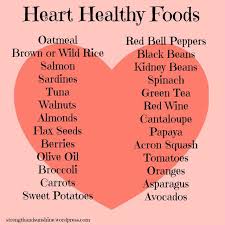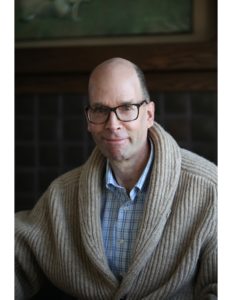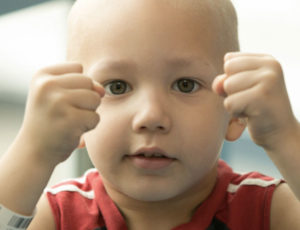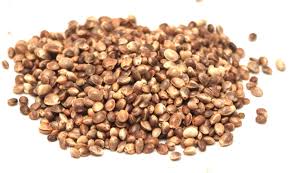
Diagnosed with Cancer? Your two greatest challenges are understanding cancer and understanding possible side effects from chemo and radiation. Knowledge is Power!
Learn about conventional, complementary, and integrative therapies.
Dealing with treatment side effects? Learn about evidence-based therapies to alleviate your symptoms.
Click the orange button to the right to learn more.
- You are here:
- Home »
- Blog »
- side effects ID and prevention »
- Pediatric, AYA Cancer – Prevent Side Effects
Pediatric, AYA Cancer – Prevent Side Effects

“By age 45, 56% of the childhood cancer survivors diagnosed before age 15 had developed severe health problems, compared with 39% of survivors diagnosed in adolescence or early adulthood and 12% of the siblings…”
This blog post is about preventing chronic disease. To be more specific, I believe that long-term cancer survivors, whether multiple myeloma (me) or pediatric and AYA cancers, can prevent the chronic disease that comes with late-stage side effects.
Technically, I am an AYA cancer survivor. I say technically because I was 34 years old when I was diagnosed with a rare incurable blood cancer called multiple myeloma (MM) in 1994. I didn’t consider myself to be young or an adolescent once I turned 30…
My take on the articles linked and excerpted below is that any cancer survivor who undergoes aggressive chemotherapy and radiation will develop severe health problems/chronic diseases after about 20-30 years. The studies in the articles below focus on pediatric and AYA cancer survivors only because they live 25-3o years after aggressive therapies- long enough to develop severe, chronic diseases…
Most cancer patients experience short term side effects like nausea, hair loss, etc. Some cancer survivors develop longer-term side effects such as chemobrain, peripheral neuropathy (nerve damage) and cataracts. But it is late stage side effects that are more serious and appear years after aggressive toxic therapies.
This is how my own side effect experiences have unfolded over since my MM diagnosis in early 1994.
- Short-term- Nausea, alopecia, difficulty sleeping, weight gain…
- Long-term- nerve damage, cataracts, chemobrain, dysphagia, a deep vein thrombosis…
- Late stage- atrial fibrillation, chemotherapy-induced cardiomyopathy, hypertension…
And the increasing threat of treatment-related secondary cancer is a constant worry.
Though I can point only to short term research, the solution to preventing both my own late stage side effects as well as the late stage side effects of pediatric and AYA cancer survivors is/are the evidence-based but non-toxic therapies that I take to manage my own MM as well as the adverse events that I’ve developed since my treatment in ’95.
- anti-inflammatory, anti-oxidant nutrition,
- anti-oxidant, anti-angiogenic supplementation,
- detoxification therapies,
- bone health therapies
and more-
To Learn More About Healing Chemo Brain- click now
If you are a multiple myeloma, pediatric or AYA cancer survivor scroll down the page post a question or comment and I will reply to you ASAP.
Hang in there,
David Emerson
- Cancer Survivor
- Cancer Coach
- Director PeopleBeatingCancer
Recommended Reading:
- Cancer Patients, Survivors, Caregivers- Counseling as Therapy
- Surviving Multiple Myeloma- Post-Cancer Fear
- AYA, Childhood Cancer Survivors’ Future Risk of Heart Disease
Cure for childhood cancer may come at the cost of premature aging
“Patient survival is the overarching goal of all cancer treatments, and improvements in survival that have been achieved over the years are an unequivocal victory for oncology.
For children with cancer, advances in therapy can mean the difference between a full life and a tragic death.
Data show that more than 80% of children with cancer will survive beyond 10 years, joining the growing number of childhood cancer survivors as treatments have evolved over the past several decades. However, as the first generation of these survivors reaches middle age, clinicians have begun to witness the long-term consequences of these lifesaving treatments.
Increasingly, unwanted late effects of intensive cancer treatments have underscored the responsibility of oncologists to not sacrifice quality of life for the sake of survival.
Among these effects is premature aging, which manifests as chronic health conditions and frailty. These conditions can, in turn, lead to premature death…
HemOnc Today spoke with pediatric oncologists, survivorship specialists and epidemiologists about how the frailty phenotype manifests in childhood cancer survivors, which treatments may put patients at greatest risk for certain comorbidities associated with older age, and ongoing research into the mechanisms that may cause accelerated aging among both young and elderly patients with cancer.
The frailty phenotype
According to Ness, premature aging among cancer survivors can present itself through a variety of characteristics, many of which are the same as those seen in natural aging.
“Young cancer survivors resemble old people,” Ness told HemOnc Today. “They have muscle wasting, they walk slowly and they spend a lot of time being sedentary. They report feeling exhausted and weak. It might be hard for them to get out of a chair or open a jar. Sometimes they will have the features of old people; they might have gray hair or less hair than you would expect.”
Young cancer survivors have higher risk of severe health problems later
“People who survive cancer during childhood and early adulthood (pediatric, AYA cancers) are more likely to experience severe, life-threatening health problems and die prematurely, a recent study suggests…
Chemotherapy can weaken the heart muscle, some newer targeted medicines can increase the risk of heart failure, and radiation can cause heart rhythm disorders and structural damage in the arteries and heart valves, according to the American Heart Association.
By age 45, 56% of the childhood cancer survivors diagnosed before age 15 had developed severe health problems, compared with 39% of survivors diagnosed in adolescence or early adulthood and 12% of the siblings without any history of malignancies…
Prevent Premature Aging –
I am the type of long-term cancer survivor discussed in the study below. I am working to prevent premature aging. I wasn’t a pediatric cancer patient. Technically I am classified as an adolescent young adult (AYA) cancer survivor because I was diagnosed at 34.
The issue that long-term cancer survivors share, whether pediatric or AYA, is that 1) we all underwent a tremendous amount of toxicity during our cancer therapies and 2) those toxicities cause a great deal of short, long-term and late stage adverse events. Many of which are fatal eventually.
I’m not writing this post to complain about all of the toxic therapies prescribed by my oncology team…back in 1995. As the saying goes “the cure is worse than the disease.”
This post is about what I do to remain in complete remission from my incurable blood cancer called multiple myeloma, avoid a treatment-related secondary cancer and finally, manage my chemotherapy-induced cardiomyopathy.
Rather than list my anti-angiogenic nutritional regimen, along with my lifestyle therapies such as exercise, whole body hyperthermia, etc. and nutritional supplementation, I will simply say that there are dozens of evidence-based but NON-toxic therapies shown to reduce the risks of MM or cancer in general or are heart healthy. You can say that these therapies prevent premature aging…
Recommended Reading:
- Cancer Therapy = Accelerated Aging
- Organic Diet-Fewer Cancer Dx’s, Longer Cancer Survival
- Living w/ Post-Cancer Fear As a Myeloma Survivor-
- Multiple Myeloma- PTSD- Manage Short, Long-term and Late Stage Health
Premature Aging in Young Cancer Survivors
“…an estimated 16 million cancer survivors who are alive in the United States today…Emerging evidence suggests that these cancer survivors are at risk for premature aging, manifesting as early onset of chronic health conditions and a higher risk of mortality compared with the general population…
It is estimated that there are currently 16 million cancer survivors alive in the United States today, a number that will exceed 18 million by the year 2022.[1,2] A majority (≥70%) are long-term cancer survivors (alive ≥5 years from diagnosis), and roughly 15% have lived 20 years or more after their diagnosis.[1–3]
For children with cancer, 5-year overall survival now exceeds 80%, and it is projected that by the year 2020 there will be more than 500 000 survivors of childhood cancer living in the United States.[4–6] For patients who undergo hematopoietic cell transplantation (HCT), more than 70% who survive the first 2 years after HCT are expected to become long-term survivors,[7–9]…
Numerous studies, many conducted among elderly (≥65 years old) survivors and some in younger survivor cohorts, have described the high burden of chronic health conditions that develop after cancer treatment, with a well-documented phenotype of premature aging among older survivors[10–14]and a phenotype suggestive of premature aging among younger survivors.[15–18]
In these survivors, there is a dose-dependent effect of treatment that interacts with a priori physiologic health to affect outcomes, whereby the more intensive the cancer-directed treatment or more vulnerable the physiologic state of the patient, the steeper the decline in health and quality of life.[4,10,19]…
High Burden of Chronic Health Conditions in Young Cancer Survivors
Both childhood cancer survivors and young adults treated with HCT are particularly vulnerable to developing chronic health conditions. Although survival rates continue to improve, improvement in lifespan has not always resulted in improvement in other health-related outcomes…
Strategies to Prevent Accelerated Aging in Cancer Patients
Identification of biological processes responsible for accelerated aging among cancer survivors is key to the development of effective pharmaceutical and/or nutriceutical agents to prevent or reverse this pathologic process…
Such interventions may not need to be drastic to be useful: for instance, given the relationship of clonal hematopoiesis to CVD and inflammation, it is possible that preemptive treatment of high-risk patients with anti-inflammatory drugs or drugs used to treat cardiovascular risk factors (eg, hypertension, dyslipidemia) could improve long-term health outcomes…
Airhart et al. recently reported the results of a human pharmacokinetics study, evaluating the therapeutic potential of oral nicotinamide riboside (NR), a pyridine nucleoside form of vitamin B3 found in milk and available as a nutriceutical, to improve blood levels of nicotinamide adenine dinucleotide (NAD+) in humans.[90] NR is converted by NR kinases to nicotinamide mononucleotide. When administered in murine models of impaired mitochondrial oxidative phosphorylation, nicotinamide mononucleotide normalizes an impaired cardiac NADH to NAD+ ratio and improves cardiac function.[90]…
To date, the best-studied interventions to counteract the effects of aging are those aimed at improving health behaviors…
Summary
The growing population of cancer survivors around the world calls for an ongoing commitment to studying health outcomes long after the primary cancer treatment has been completed. For young cancer survivors, the burden of chronic health conditions can be substantial, affecting both their healthspan and lifespan. Longitudinal studies are needed to better characterize aging in these survivors, facilitating much-needed interventions to halt or even reverse the trajectory of accelerated aging. These efforts will be enhanced through collaborations between translational researchers, clinical oncologists, primary care providers, geriatricians, patient caretakers, and other stakeholders committed to improving the lives of cancer survivors.”





